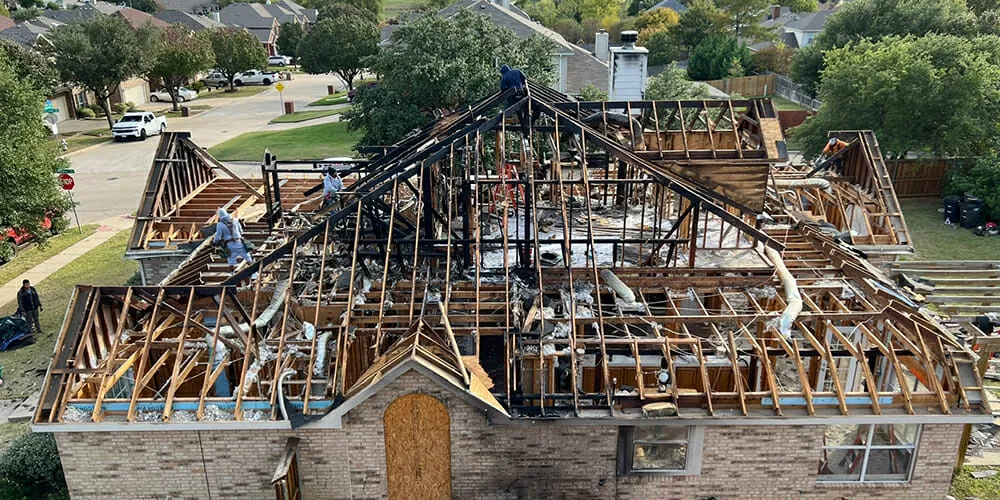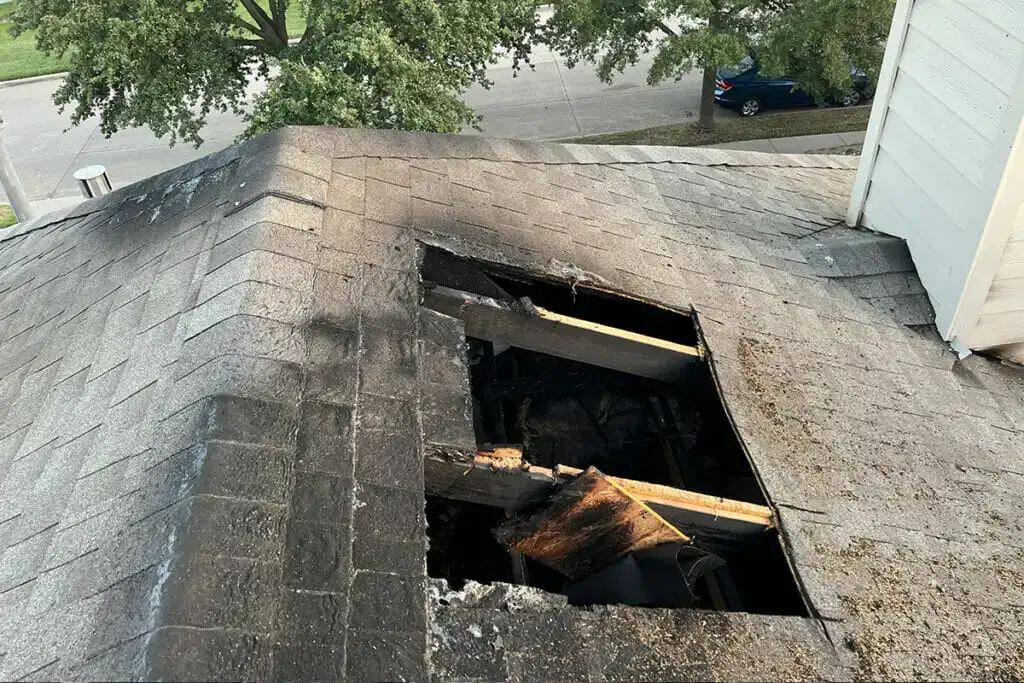1. Heating Equipment: The Leading Cause of House Fires
According to the NFPA, heating equipment is responsible for 1 in every 7 home fires and results in almost 500 deaths annually.
Heating equipment is one of the leading causes of house fires during winter. Space heaters, fireplaces, and furnaces can all ignite nearby flammable materials if used improperly. Place space heaters on flat, non-flammable surfaces and keep them at least three feet from curtains, furniture, or bedding.
Fireplaces and chimneys should be professionally inspected and cleaned annually. Creosote buildup, a major cause of chimney fires, can be easily prevented with routine maintenance. Remember to never leave a heater or fireplace unattended. According to the National Fire Protection Association (NFPA), heating equipment is responsible for 1 in 7 home fires, causing nearly 500 deaths annually.
Key Safety Tips:
- Place space heaters on flat, non-flammable surfaces and keep them at least three feet away from curtains, furniture, and bedding.
- Have your chimney and fireplace professionally inspected and cleaned annually to prevent creosote buildup.
- Never leave heating equipment unattended.
Learn more about heating equipment safety from the NFPA.

2. Holiday Decorations: Festive but Flammable
Fires involving Christmas trees spread rapidly, causing an average of $1,000 in damage per minute, according to the U.S. Fire Administration.
Holiday decorations bring joy but also pose risks. Dry Christmas trees, overloaded light strands, and unattended candles are common culprits. Keep your Christmas tree well-watered to prevent it from becoming highly flammable and replace any light strands with frayed wires.
Candles are another frequent cause of fires. LED candles are a safer alternative, but if you use real candles, always extinguish them before leaving the room or going to bed. Fires involving Christmas trees spread quickly, causing an average of $1,000 in damage per minute, according to the U.S. Fire Administration.
Key Safety Tips:
- Keep your tree well-watered to reduce its flammability.
- Check light strands for frayed wires and replace damaged ones.
- Consider LED candles as a safer alternative to open flames.
Find more holiday decoration fire safety tips from the U.S. Fire Administration.
3. Cooking Safety: The #1 Cause of Kitchen Fires
Cooking-related fires account for 50% of all home fires, with unattended cooking being the top cause.
The kitchen becomes the heart of the home during winter, especially during the holidays. Unfortunately, cooking-related fires account for 50% of all house fires, with unattended cooking being the leading cause.
Always stay in the kitchen while cooking and keep flammable items, like dish towels, away from heat sources. Having a fire extinguisher within reach can prevent small incidents from becoming catastrophic.
Key Safety Tips:
- Stay in the kitchen while using the stove or oven.
- Keep flammable objects like dish towels and paper towels away from heat sources.
- Have a fire extinguisher within reach to handle small flare-ups before they spread.
Explore more kitchen fire safety tips from the Red Cross.

4. Electrical Safety: Prevent Overloaded Circuits
The winter season increases demand on electrical systems due to heaters, decorative lights, and additional appliances. Avoid electrical fires by:
- Inspecting cords and replacing any that are frayed or damaged.
- Using power strips with surge protectors rather than overloading outlets.
- Unplugging holiday lights and non-essential appliances when not in use.
5. Smoke Alarms & Fire Extinguishers: Essential Safety Tools
Smoke alarms are critical for early detection in case of fire. Install them on every level of your home, including inside bedrooms and outside sleeping areas. Test them monthly and replace batteries annually to ensure they function properly.
Fire extinguishers should be placed in high-risk areas like the kitchen, garage, and near fireplaces. Teach all family members how to use them correctly. A quick response with an extinguisher can mean the difference between a minor incident and a devastating fire.
Key Safety Tips:
- Smoke Alarms: Install them on every level of your home, including inside and outside sleeping areas. Test them monthly and replace batteries yearly.
- Fire Extinguishers: Keep them in high-risk areas like the kitchen, garage, and near fireplaces. Teach all family members how to use them properly.
Visit Ready.gov for detailed advice on smoke alarm maintenance.
6. Fire Escape Plan: Know Your Exit Strategy
Every family needs a fire escape plan, and it should be practiced regularly. Identify two ways out of each room and agree on a safe meeting spot outside.
Practicing your plan ensures that everyone knows what to do during an emergency. One family we helped after a house fire shared how their children stayed calm because they had practiced their escape plan several times. It’s a simple step that can save lives.
A well-practiced fire escape plan can save lives in an emergency. Create a plan that includes:
- Two exit routes from every room.
- A designated meeting spot outside.
- Regular fire drills to ensure everyone in the household knows what to do.
7. Roof Safety: An Overlooked Fire Prevention Step
Your roof plays a crucial role in fire safety, especially in regions prone to wildfires. Consider these steps to enhance protection:
- Clear debris from gutters to prevent fire spread. Our gutter services can help keep your gutters clean and functional.
- Inspect your roof for damage that could allow flames to enter your home. Schedule a free roof inspection to identify potential vulnerabilities.
- Use fire-resistant roofing materials for added protection, such as metal roofing. Learn more about our roof replacement services.
Fire Safety in Fort Worth, Texas
In Fort Worth, winter weather occasionally brings ice storms, which can disrupt power and lead to increased use of heating equipment. Be prepared by ensuring your heating devices are in good condition and ready for heavy use.
Local resources, like the Fort Worth Fire Department, offer valuable programs and advice to help you stay safe. Check out their recommendations to further protect your home:
Winter Fire Safety Checklist for Homeowners
- ✅ Test smoke alarms
- ✅ Schedule furnace and chimney inspections
- ✅ Avoid overloading electrical outlets
- ✅ Water your Christmas tree daily
- ✅ Inspect and replace space heater cords
- ✅ Keep heating equipment clear of flammable items
- ✅ Use flame-resistant holiday decorations
- ✅ Turn off holiday lights overnight
- ✅ Have fire extinguishers accessible
- ✅ Use a fireplace screen
- ✅ Check for overloaded circuits
- ✅ Monitor cooking at all times
- ✅ Inspect roof and gutters
Conclusion
House fires during the winter months are tragic but largely preventable. At Good Contractors Roofing, we’ve seen the aftermath of fires and are committed to helping you avoid them. By implementing these fire safety tips, you can protect your family, home, and cherished memories.
If a fire does occur, our team specializes in fire damage restoration to help restore your home and peace of mind.
If you’re ready to enhance your home’s safety, contact us for a roof inspection or guidance on fire-resistant materials. Together, we can help ensure this winter is safe and filled with peace of mind.
Serving homeowners throughout Fort Worth and surrounding areas.

